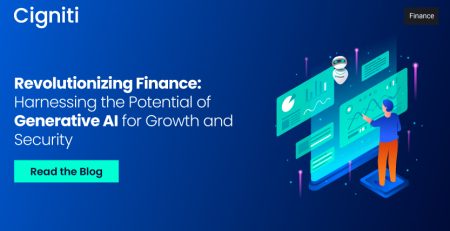11 Benefits of Embedded Finance and How it Transforms the Fintech
Have you ever thought about how you can make payments for a movie without standing in line or pay utility bills without stepping out of your home via Paytm or Google Pay? Yes, you can name many applications that make instant payments happen. But how is this happening? How are conventional banks getting replaced with digital transactions? The answer would be embedded financial services. Why is embedded finance important?
Embedded Finance is the integration of financial services into non-financial services or products. Embedded Finance Fintech platforms allow organizations to bypass technical infrastructure and effort by providing “Plug and Play” functionality using APIs. These platforms form partnerships with banks and insurers, enabling the provision of financial services. A simple example of this would be a pop-up for travel insurance while booking flight or train tickets.
The Process of Embedded Finance Services
It is essential to know the stakeholders involved before understanding the back-end process of embedded finance. There are three major stakeholders:
- Consumer: A person who buys the non-financial product and, thus, becomes a potential customer for the embedded financial services offering (as explained before).
- Business: The company that is selling a non-financial product or service.
- Financial Institution (Banks, non-banking financial companies or NBFCs, fintech): The companies/institutions selling or backing the embedded financing products. These companies don’t sell the financial offerings directly but indirectly through the businesses.
Types of Embedded Finance
- Embedded Payments: Embedded payments are when payment functionality is embedded within a software platform. Embedded payments allow users to make payments from the same platform without searching their pockets for cash or swipe cards. Grocery apps such as Jiomart and BigBasket enable users to make purchases and make embedded payments. These apps help consumers make payments without switching between apps.
- Embedded Insurance: When insurance services are given through non-financial products/services (retail or food delivery apps), it is called Embedded Insurance.
Why is embedded insurance taking off? It simply puts customers in control.
Consider this scenario: A customer wants to buy a product online, compares prices, and then clicks on “Buy this Product”, and they’re offered coverage for the product. It’s an excellent option to secure with just a few clicks from their mobile device, so they opt for the coverage. There’s no need to search elsewhere and make a separate purchase.
- Embedded Lending/Credit: When the financial services of lending are given through non-financial products/services (retail or food delivery apps), it is called Embedded Lending. It can be used to acquire loans, repay them, and pay EMIs for online products. For example, several B2B e-commerce platforms, including Amazon, allow customers to set up a line of credit for purchases by setting up the Buy Now, Pay Later (BNPL) feature. This way, they will buy first and then pay later in installments.
- Embedded Investments: Embedded investments help the process of investing by providing a single platform to manage their investments. These platforms allow users to invest in mutual funds, retirement plans, stocks, etc. A notable example is Paytm.
Three key players in the embedded finance fintech ecosystem make it possible to provide financial solutions to users: Financial Institutions, Digital Platforms, and Embedded Finance Infrastructure Companies.
11 Benefits of Embedded Finance
Embedded finance fintech has a lot of benefits for various entities and stakeholders. As a result, more people have driven toward it in recent years.
Embedded Finance Benefits for Businesses
- Alternate source of revenue: Businesses get a share of the income from customers from the financial products sold on their respective websites/apps.
- Competitive advantage and customer trustworthiness: A website offering financial products like insurance, easy financing (EMIs), and online payment options would be more attractive to customers than a website that doesn’t provide these options.
- Higher order value: EMI and BNPL (Buy Now Pay Later) options lessen customers’ need to buy more high-value products than they usually would.
Benefits of Embedded Finance for Financial Institutions
- Easier acquisition of customers: Business collaborations and embedding their offerings on relevant websites and apps give NBFCs easy access to a large and appropriate customer base at a minimal cost. Financial services can also be extended to seemingly riskier customers through websites or apps, which may not be possible through the usual route.
- Relevant collection of data: Financial institutions get access to not only their financial data but also other data like shopping preferences, frequency of usage of specific services like cab-hailing, etc., which can be used to curate specific financial products at a macro level and cross-sell other offerings at a micro level.
- Easier management of consumers: With the companies running the websites and apps dealing with customers, the user lifecycle management responsibility gets divided between the financial institutions and the businesses, which eases the burden on the financial institutions to cater to queries, customer service, etc.
Embedded Finance Benefits for Users
- Convenience: As a user, you get convenient access to financial services like online payment options (debit or credit) or EMI facilities when checking out or casually using a website or app.
- Offerings: The financial offerings you get access to are not only conveniently placed but also relevant to the website or app you are using.
- Tailored offerings: Financial services available in the market directly are not customer-friendly in terms of both offerings and processes. Embedded finance fintech offers customized financial services to consumers at the click of a button. For example, they were getting a buy-now-pay-latervs personal loan option at checkout.
- Inclusion: Embedded finance enables underserved users to access formalized financial services that they would not otherwise be able to obtain due to complicated processes and stringent filtering criteria used by financial institutions.
- Better experience: As a consumer, conveniently getting added benefits always leads to a better overall shopping experience.
Conclusion
Embedded finance is adaptable and appealing to all industries. It also has the potential to revolutionize payments and widen the horizons of innovation. With time, we can expect more novelty and one-of-a-kind offerings from various businesses and users.
Cigniti Technologies has been providing embedded payment services to many banking and insurance clients. Our testing services touch upon all segments, like payments, insurance, lending, and investments, which we can further customize to meet client needs in providing robust and secure solutions. Cigniti, as a leading AI & IP-led Digital Assurance and Digital Engineering Services Company, can help clients with this activity with our best-qualified experts, who are well-trained and certified in handling and offering all types of benefits of embedded finance.
Need help? Talk to our Financial domain and BFSI testing experts to learn more about the benefits of Embedded Finance and how it transforms the Fintech industry.





Leave a Reply